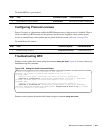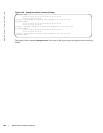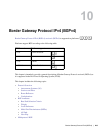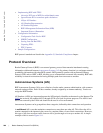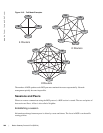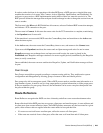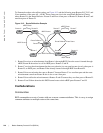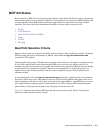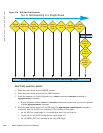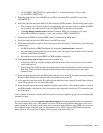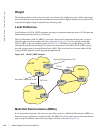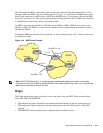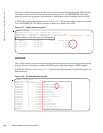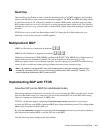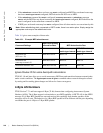Border Gateway Protocol IPv4 (BGPv4) | 211
BGP Attributes
Routes learned via BGP have associated properties that are used to determine the best route to a destination
when multiple paths exist to a particular destination. These properties are referred to as BGP attributes, and
an understanding of how BGP attributes influence route selection is required for the design of robust
networks. This section describes the attributes that BGP uses in the route selection process:
• Weight
• Local Preference
• Multi-Exit Discriminators (MEDs)
• Origin
• AS Path
• Next Hop
Best Path Selection Criteria
Paths for active routes are grouped in ascending order according to their neighboring external AS number
(BGP best path selection is deterministic by default, which means the
bgp non-deterministic-med
command is NOT applied).
The best path in each group is selected based on specific criteria. Only one “best path” is selected at a time.
If any of the criteria results in more than one path, BGP moves on to the next option in the list. For
example, two paths may have the same weights, but different local preferences. BGP sees that the Weight
criteria results in two potential “best paths” and moves to local preference to reduce the options. If a
number of best paths is determined, this selection criteria is applied to group’s best to determine the
ultimate best path.
In non-deterministic mode (the
bgp non-deterministic-med command is applied), paths are compared in
the order in which they arrive. This method can lead to FTOS choosing different best paths from a set of
paths, depending on the order in which they were received from the neighbors, since MED may or may not
get compared between adjacent paths. In deterministic mode, FTOS compares MED between adjacent
paths within an AS group since all paths in the AS group are from the same AS.
Figure 10-4 illustrates the decisions BGP goes through to select the best path. The list following the
illustration details the path selection criteria.



